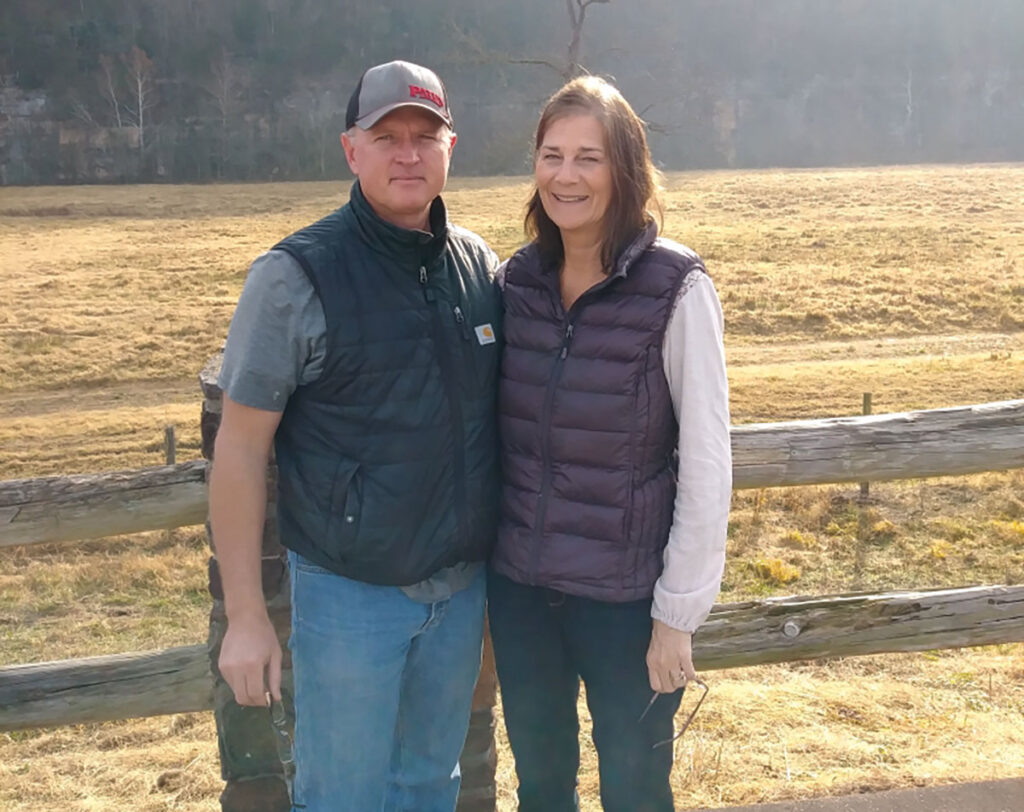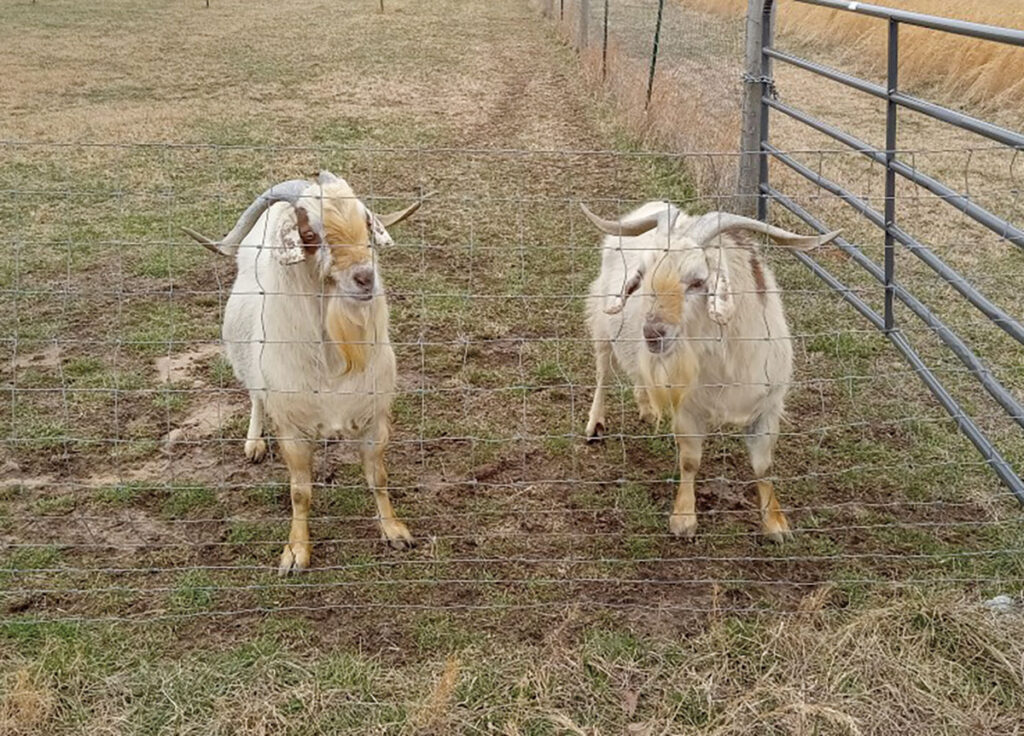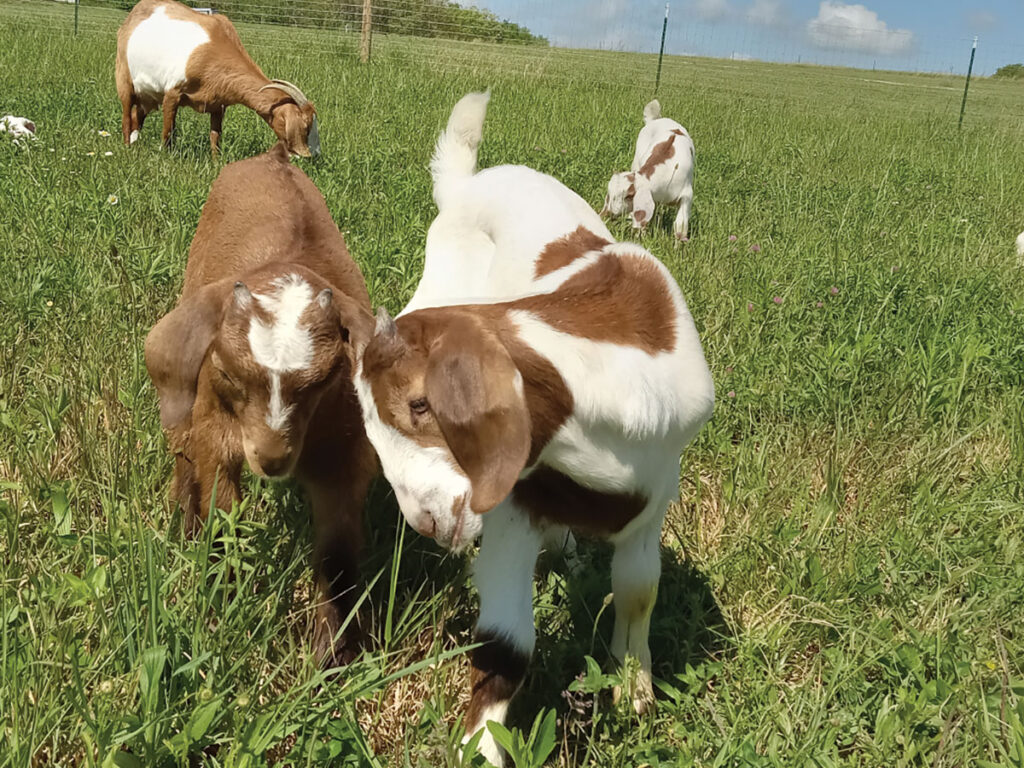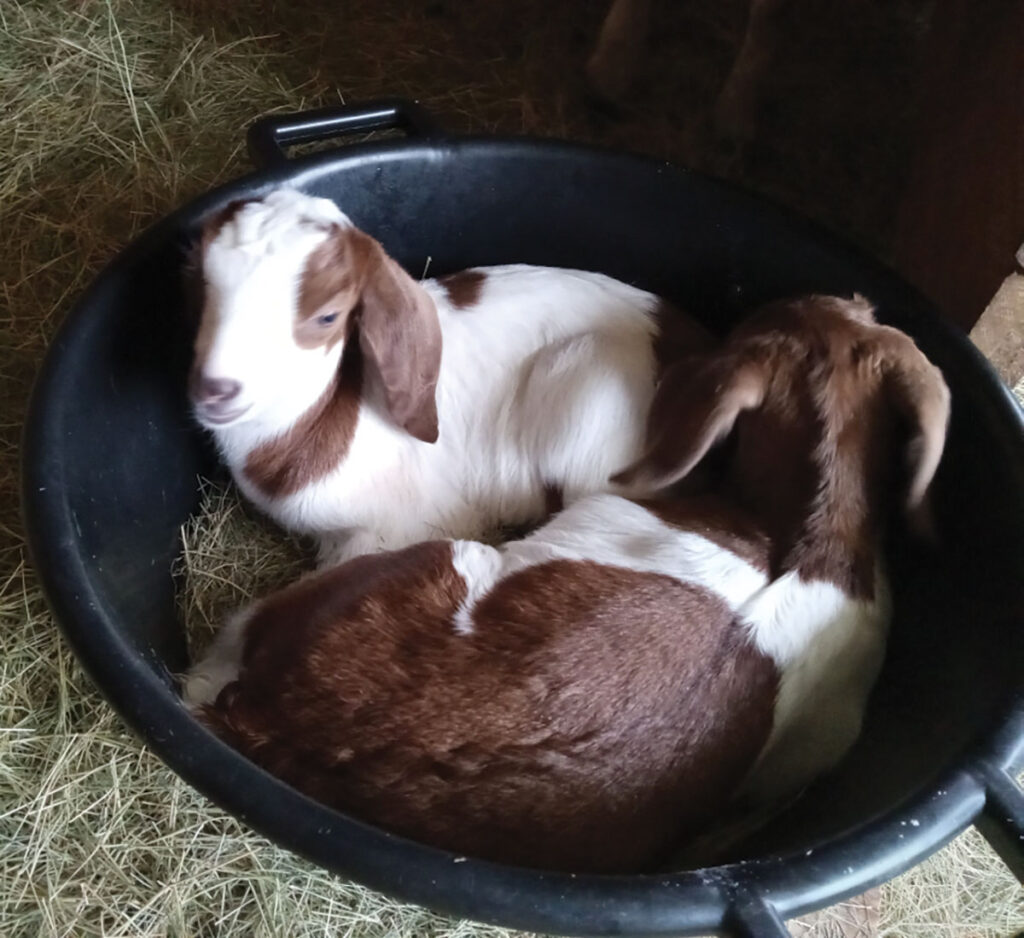
Mountain Range Farms pursue a goal to develop a self-sustaining homestead
COMPTON, ARK. – Jay and Christine Blackshear, with the help of their son, Joel, operate Mountain Range Farms in Compton, Ark., where they raise a small Kiko/Boer cross goat herd. While they focus on meat goats now, they hope to add milking the goats to the operations. They also raise chickens on the 20-acre farm in Newton County.
When Jay and Christine Blackshear moved from Texas to their farm near Compton five years ago, they had already done a lot of research into what it would take to raise goats. The goats were just part of their overall goal to develop a self-sustaining homestead.
“We did a whole lot of research and decided we wanted to start with meat goats. Milk will come later,” she said. “We met a local lady who had twin bucks which were Kiko/Boer cross. We told her we would take both of them.”
It would be another six months before they started adding does to the small herd. It was during that time that an extreme winter weather event occurred, and temperatures dropped to minus 15 degrees.
“They were so resilient. We had to go out every couple of hours and cut the ice from their beards,” she said. “We were sold at that point.”
They bought six does from the same lady who had the bucks, Maurita Langley of Langley Farms. That relationship would blossom, and Maurita became the couple’s goat mentor. She provided valuable advice, insight, and friendship, Christine said.

The six does may have been from the same farm but they were from different lines than the bucks, she clarified.
Every year, they leave the bucks in a pasture – one buck with three of the does in one pasture and the other buck with a different set of three does in another pasture – and let nature take its course.
“The bucks are usually kept separate, then around November 1, we move them into their pastures with the does,” Christine said. “Every year, we have only spring babies. We don’t have the facility for winter babies. Once they have the kids, we look over them to decide which to keep.”
The herd has grown to now include the original two bucks, eight does, and two wethers.
“We would like to milk our goats, but that’s down the way a bit,” Christine said.
Their feeding practices include a mix of grazing and grain. They have five pastures that they rotate between and also grow hay.
“We give them grain in the winter to supplement them during pregnancy and because it’s winter and they have less pasture land to graze on,” Christine said. “We hope to eventually plant enough to sustain them so they will have to eat less grain.”
The operation, which includes chickens, a garden, a pond full of catfish, and selling handmade fabric purses, is not a full-time job yet; Jay works as a homebuilder, and Christine is a volunteer at the local homeless shelter. The goat operation makes enough money to purchase the hay and buy grain for the herd.
They continue to research best practices for goat farming and other aspects of homesteading with Maurita continuing to be a valuable resource. They’ve learned both from research and experience that the Kikos are a hearty breed that is parasite-resistant. They recommend YouTube and several books, including My Goat Binder and My Parasite Binder, both by Delci Plouffe, for anyone interested in starting a goat-raising operation. The books have taught many skills including how to identify and manage some illnesses. This has made goat raising easier and more affordable because they’ve been able to decrease vet visits.
“If you don’t have a cattle trailer, it can be hard to take the goats to the vet,” she said.

Christine and Jay could tell many stories about what they’ve learned or wish they had learned in the process.
“We’re still learning and it’s produced some pretty funny stories,” Christine said with a chuckle as she related one story about how the bucks used their horns to escape the fencing they originally installed. The fencing didn’t go into the ground and the goats were able to pry the fence up and escape.
“We had to redo the fencing,” she said. “I wish that originally we knew more about fencing. You have to have a fence that goes into the ground with goats.”
Christine said that even with all of their education, they sometimes still feel like they are “newbies” at raising goats, and they encouraged anyone wanting to start raising goats to do lots of research on a variety of topics, not just the basics, before getting started.
“Do your research and start small with one doe and one buck,” she said. “Then go through a birthing season first before you decide to expand.”
While research is necessary, goats are a great farm animal to start a homestead farm with, she said. “Goats are not that hard,” she said. “We really enjoy them. We love our goats.”

Some people who started the hobby during the COVID-19 pandemic may disagree, however. Many started and then sold their goats later. This phenomenon created a glut in the goat market, but that is improving, she said.
There are several changes the Blackshears would like to make on their farm, including adding mineral buffets to the feeding process, which would allow the goats to instinctively go toward which minerals their bodies need supplementing instead of getting an unnecessary mix. They are also researching the ability to do their own processing.
“We want to learn about processing goats but we will need to build another facility for that,” Christine said. “We want to learn more about that before we go in that direction.”
This desire is part of an overall plan to become for self-sustaining for the overall farm.
“We’re hoping that it eventually becomes our livelihood,” she said. “We started as a hobby farm and want to be a full-time homestead farm.”







